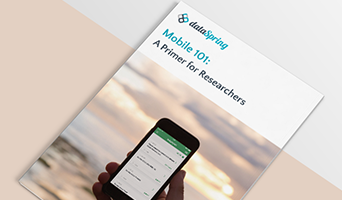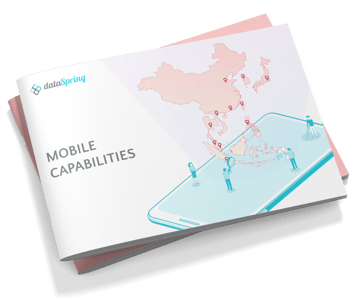Before adapting your online study to mobile, it is worth considering if there is a valid research reason for the switch.
The use of mobile is one of the most exciting and dynamically changing aspects of market research today. Like the move to online data collection in the late 1990s, best practices for mobile surveys are still being developed. In the meantime, many clients and agencies have either experimented with mobile or are eager to conduct pilot studies.
So when is conducting a mobile study appropriate? It boils down to two considerations: methodology and sampling.
Methodology
Consumers today are almost always with their smartphones, making it invaluable for capturing respondent insights 'in-the-moment' while they are traveling, shopping, exploring, experiencing, or purchasing.
Specifically, mobile is well suited for:

In-Home Usage Tests
Mobile can simplify the process by getting respondents to purchase products themselves and only rewarding those who fully complete the study. The smartphone then allows easy capture of usage through both structured questions and media uploads.

Diary Studies
Smartphones are used to manage consumer’s daily lives and tasks, making them an excellent tool for diary studies. The average U.S. consumer checks their smartphone 46 times a day, providing ample opportunity to message respondents and keep participation rates high.
Sample Reach
These days there are certain demographics and global regions that are much more efficiently reached via mobile. Perhaps needless to say, younger consumers are much easier to survey via mobile, but researchers should also consider mobile for global initiatives.
In Asia and other emerging regions, mobile ownership continues to grow and is often the primary means of accessing the internet.
In addition to better reaching younger consumers and more effectively sampling certain regions, mobile respondents tend to be newer to survey participation. Also since it is still somewhat of a novelty, participation rates are generally higher. All of these factors contribute to better, and oftentimes more thoughtful, data.
Adapting Your Online Study to Mobile
1. Text
Given the interface, it is important to edit the length of all text. Instructions need to be brief and to the point. Even more than online, content load times are crucial, and slow-rendering surveys will lead to high respondent dissatisfaction and higher incompletion rates. Google recommends: to “deliver and render the above the fold (ATF) content in under one second, which allows the user to begin interacting with the page as soon as possible.”
You should also avoid overly formal ‘research’ language. While you should never compromise good question design, try to make the feel a bit more casual and inviting. This will ultimately aid in comprehension and understanding, which are keys to good research.
These days there are certain demographics and global regions that are much more efficiently reached via mobile.share on Twitter
2. Question Types
This is an area where mobile is most limited versus online research. Anything that requires excessive scrolling, or pinch and expand generally won’t work. This means that large blocks of attributes and grids are out. Presenting stimuli can also be limiting. That being said, streaming content can often be presented successfully.
While some question types won’t work, there are other tools that are well suited to mobile, such as uploading photos and videos. These are activities that can add real depth to your study and capture the true emotions of your respondent. In mobile research, a picture can quite literally take the place of a thousand words.
3. User Interface
Keep the design as clean as possible by avoiding unnecessary graphic clutter. Logos, headers, footers, etc. should all be eliminated. In general, mobile surveys should be limited to about eight to 10 minutes, so you can also eliminate the progress bar that is standard on online surveys. Drop-down menus should also be avoided as they are difficult to use in mobile.
4. Add-ons
In addition to the specific methodologies that are particularly suited to online, mobile offers some unique capabilities. This includes passive data collection, which allows the capture of information on location, app installation and usage, and ad exposure. Respondents can also be asked to verify their location via photos for out-of-home studies.
Lastly, it is important to work with your research vendor to pre-test the user experience. A good mobile survey platform should be optimized for both Apple and Android OS, but it is still crucial to make sure questions and responses download quickly, render properly, and that responses can be easily selected.

Final Thoughts
While not all study types are suited for mobile, the methodology has numerous benefits. Remember, what you give up in question type and survey length when adapting your online study to mobile, you can make up in immediacy, depth, emotion, and quality.









.png)



 Download Panel Book
Download Panel Book




